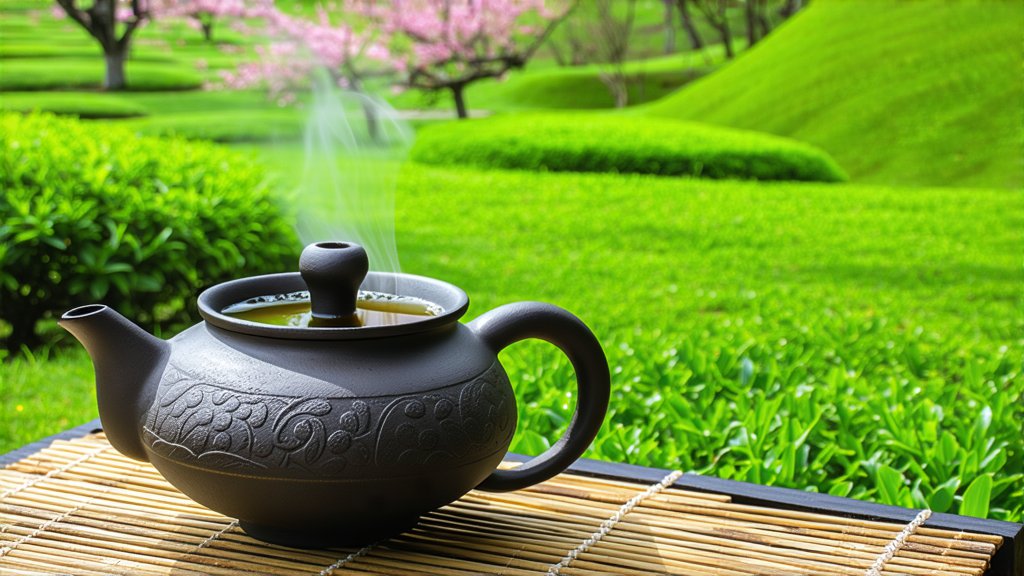
The Golden Elixir: A Journey into the World of Keemun Black Tea
In the lush landscapes of Anhui Province, nestled within the heart of China, lies a treasure trove of tea history and tradition. Among the myriad of teas that grace this ancient land, one stands out for its unique flavor profile and storied past – Keemun Black Tea. This exquisite beverage, often referred to as "Qimen Hong Cha" in Mandarin, has captivated tea enthusiasts around the globe with its rich aroma and distinctive taste. Join us as we embark on a journey to explore the depths of this golden elixir.
A Glimpse into History
Keemun Black Tea's roots trace back to the Tang Dynasty (618-907 AD), making it one of the oldest tea varieties in existence. Its name is derived from Qimen County, where it was first cultivated. Over centuries, Keemun has evolved, adapting to changing tastes and preferences while maintaining its core characteristics. It gained international fame during the 19th century when it became a staple in British afternoon tea rituals, further cementing its status as a global icon of fine tea.
Varieties and Characteristics
Keemun Black Tea is renowned for its diverse range of flavors, which can be attributed to variations in processing techniques and regional influences. The most notable types include:
- Huangshan Maofeng: Grown in the Huangshan Mountains, this variety boasts a sweet, fruity flavor with hints of orchid and a delicate, lingering finish. Its leaves are typically twisted and covered in downy white hairs, giving it a distinctive appearance.
- Xihu Longjing: Though more commonly associated with green tea, Xihu Longjing also exists as a black tea variant. This rare form shares similarities with its green counterpart but offers a deeper, more complex flavor profile with notes of smokiness and a smooth texture.
- Mengding Ganlu: Hailing from the Mengding Mountains, this tea is known for its robust, full-bodied flavor with earthy undertones and a slight astringency. It pairs well with milk and sugar, making it a popular choice for those who enjoy bolder teas.
Each variety of Keemun Black Tea carries the essence of its terroir, reflecting the unique climate, soil, and altitude of its growing region. These factors contribute to the tea's distinct character and make each cup an exploration of nature's bounty.
The Art of Craftsmanship
The creation of Keemun Black Tea is a meticulous process that combines tradition with precision. Here's an overview of the key steps involved:
- Withering: Freshly plucked leaves are spread out on bamboo mats to wilt under the sun. This step reduces moisture content and initiates enzymatic activity, which will later contribute to the tea's flavor development.
- Rolling: The withered leaves are then rolled using traditional stone mills or modern rolling machines. This action breaks cell walls, releasing juices and facilitating oxidation.
- Oxidation: The rolled leaves are left to oxidize, a process that transforms their color from green to dark brown or black. Oxidation levels vary depending on the desired outcome, ranging from lightly oxidized for a lighter flavor to fully oxidized for a stronger taste.
- Drying: Finally, the oxidized leaves are dried to remove any remaining moisture. This step ensures stability and prevents mold growth, allowing the tea to be stored without refrigeration.
- Sorting and Grading: After drying, the tea undergoes rigorous sorting and grading based on leaf size, shape, and quality. Only the finest leaves make it into premium grades like "Golden Monkey" or "Grade 1."
Throughout this process, skilled artisans carefully monitor temperature, humidity, and timing to preserve the tea's delicate flavors and aromas. Each batch is a testament to their expertise and dedication to producing exceptional tea.
Savoring the Experience
To truly appreciate Keemun Black Tea, one must engage all senses during the tasting process. Here's how you can elevate your experience:
- Visual Appreciation: Observe the dry leaves before brewing. Look for uniformity in size and shape, as well as vibrant colors indicating freshness. Upon infusion, the liquor should display a clear, amber hue, reminiscent of sunset.
- Aromatic Delight: Inhale deeply as you lift the cup towards your nose. Note the subtle fragrances that emerge – floral, fruity, or woody – depending on the specific type of Keemun you're enjoying. The aroma should be clean and inviting, setting the stage for what's to come.
- Tasting Technique: Take a small sip, allowing the liquid to coat your palate evenly. Pay attention to the initial impression, mid-palate sensations, and aftertaste. Keemun Black Tea often starts with a gentle sweetness followed by a complex medley of flavors that evolve over time.
- Texture Matters: Assess the mouthfeel of the tea. A well-crafted Keemun should have a silky smoothness that glides effortlessly across your tongue. Any astringency should be balanced and not overpowering.
- Emotional Connection: Finally, let yourself be transported by the experience. Close your eyes and imagine the misty mountains of Anhui, the hands that crafted this tea, and the generations of wisdom passed down through centuries. Each sip is a connection to a rich cultural heritage and a moment of tranquility in our fast-paced world.
Conclusion
Keemun Black Tea is more than just a beverage; it's a gateway into the soul of Chinese tea culture. From its ancient origins to its modern-day popularity, every aspect of this tea tells a story of tradition, craftsmanship, and a deep respect for nature. Whether you're a seasoned connoisseur or new to the world of tea, exploring Keemun Black Tea promises an unforgettable adventure filled with discovery and delight. So why wait? Brew a pot today and embark on your own journey through this golden elixir.